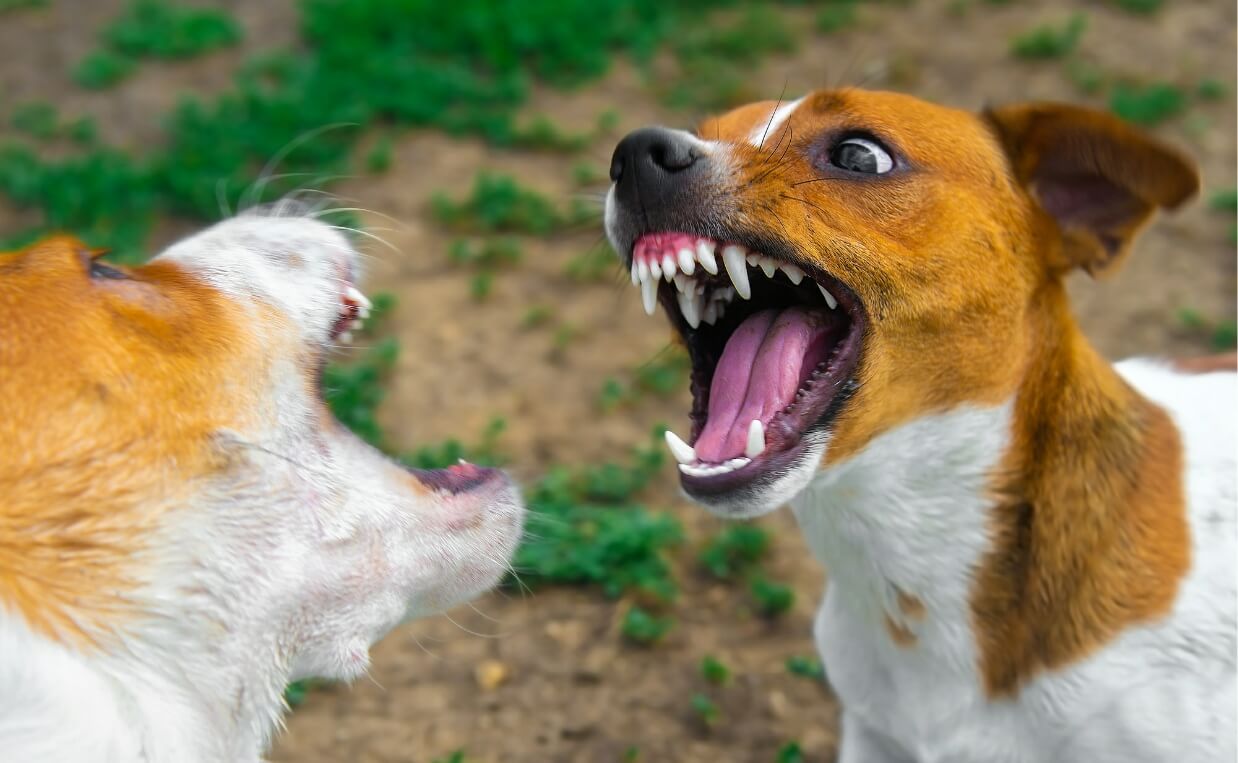
Aggression in dogs is one of the most common and serious behavior problem in dogs. It can be challenging to live in a household a dog who exhibits aggressive behavior, especially if you want to take your dog out in public or a someone you know visits with their dog.
Typically, an aggressive dog will bark, lunge and bite other dogs. Just because a dog is aggressive toward other dogs doesn’t mean he or she will display aggressive behavior toward people. It’s not just larger dogs and so -called “dangerous breeds” who are prone to aggression; any breed is capable of becoming aggressive under the right circumstances.
Aggression is one of the top reasons dog parents seek the help of a professional dog trainer or animal behaviorist. Although aggression can’t be cured overnight, most dogs do respond to training techniques and program.
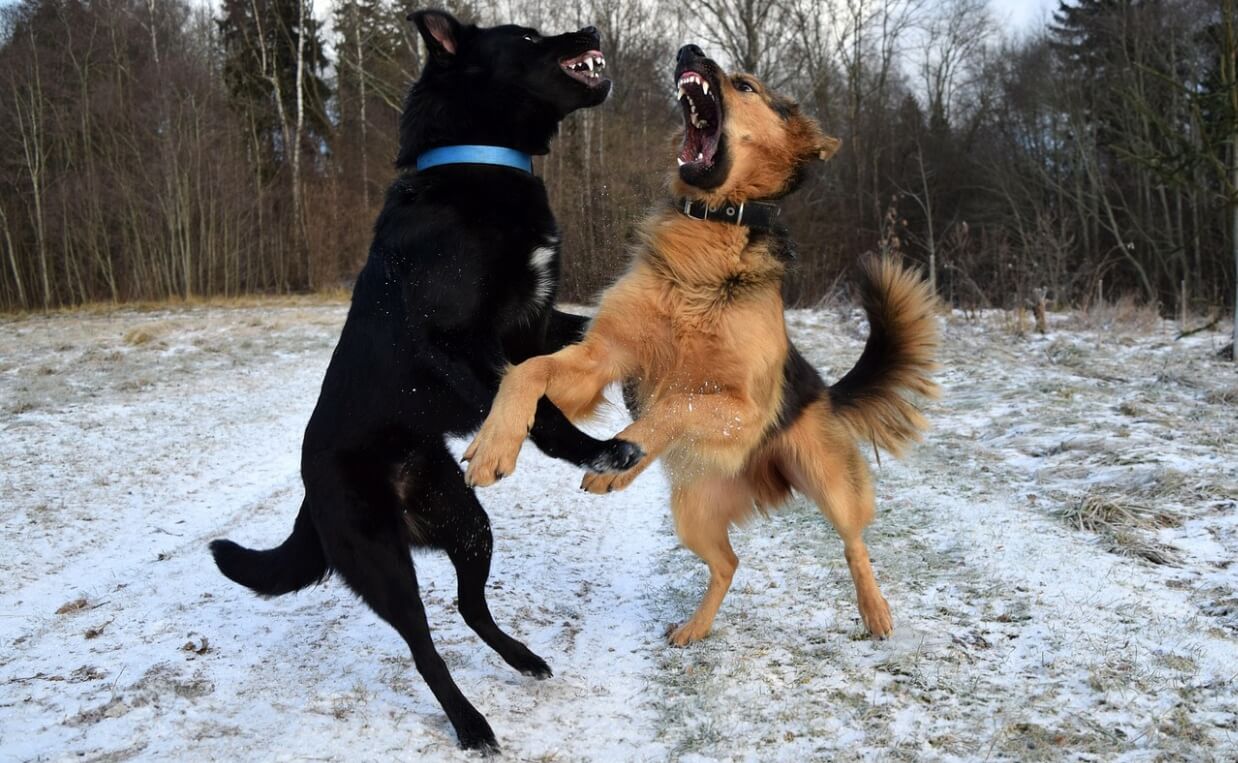
What is Dog Aggression Toward Other Dogs?
Dog aggression is a common behavioral concern many dog families face. Aggression occurs when a dog approaches another dog and behaves forcefully. Wild animals are aggressive when guarding their territories, defending their offspring, and protecting themselves. Species who live together in groups use aggression and the threat of aggression to keep the peace and to negotiate social interactions.
Dog aggression encompasses a wide range of behaviors that usually begin with warnings and can escalate to an attack. Dogs may stop their aggressive conduct at any point during an aggressive encounter. A dog who shows aggression usually displays some of the following behaviors in a sequence of escalation.
- Becoming very still and rigid
- Threatening guttural bark
- Lunging forward toward the other dog
- Charging the other dog
- “Mouthing” the other dog without biting
- “Muzzle punch” where the dog literally punches the other dog with their nose
- Growling
- Showing teeth
- Snarling (growling and showing teeth)
- Snapping (no contact with skin)
- Quick nip (no mark)
- Quick bite (skin is broken)
- Bite with enough pressure to cause bruising
- Bite causing puncture wounds
- Repeated bites in rapid succession
- Bite and shake
Dogs don’t always follow this sequence, and they often do several of the behaviors above simultaneously. Many times, dog parents don’t recognize the warning signs before a bite, so they perceive their dogs as suddenly flying off the handle. However, that usually isn’t what actually happens. While it can be just milliseconds between a warning and a bite, but dogs rarely bite without giving some type of warning beforehand.
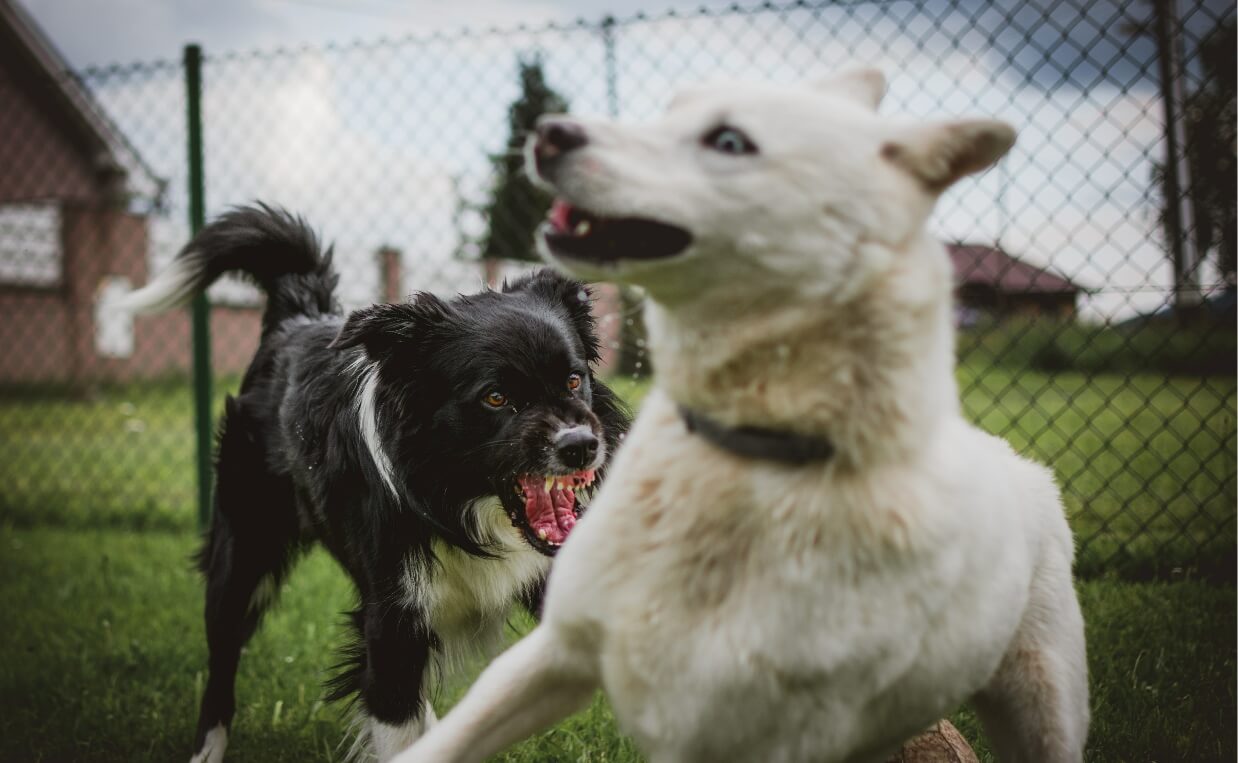
What Causes a Dog to be Aggressive?
The first step toward stopping aggressive behavior in your dog is understanding what is causing your dog’s aggression. You can’t come up with a plan for how to help your dog until you know the reason why your dog is exhibiting aggressive behavior.
The most common types of dog aggression include:
-
Territorial aggression
Your dog defends his or her space or your home from what it believes to be an intruder or perceives as danger
-
Protective aggression
The dog protects members of its pack against another animal or a person. For example, mother dogs are extremely protective of their puppies and may be hostile toward anyone who goes near them.
-
Possessive aggression
The dog protects food, chew toys, bones, or another object of value to it. This is sometimes called resource guarding.
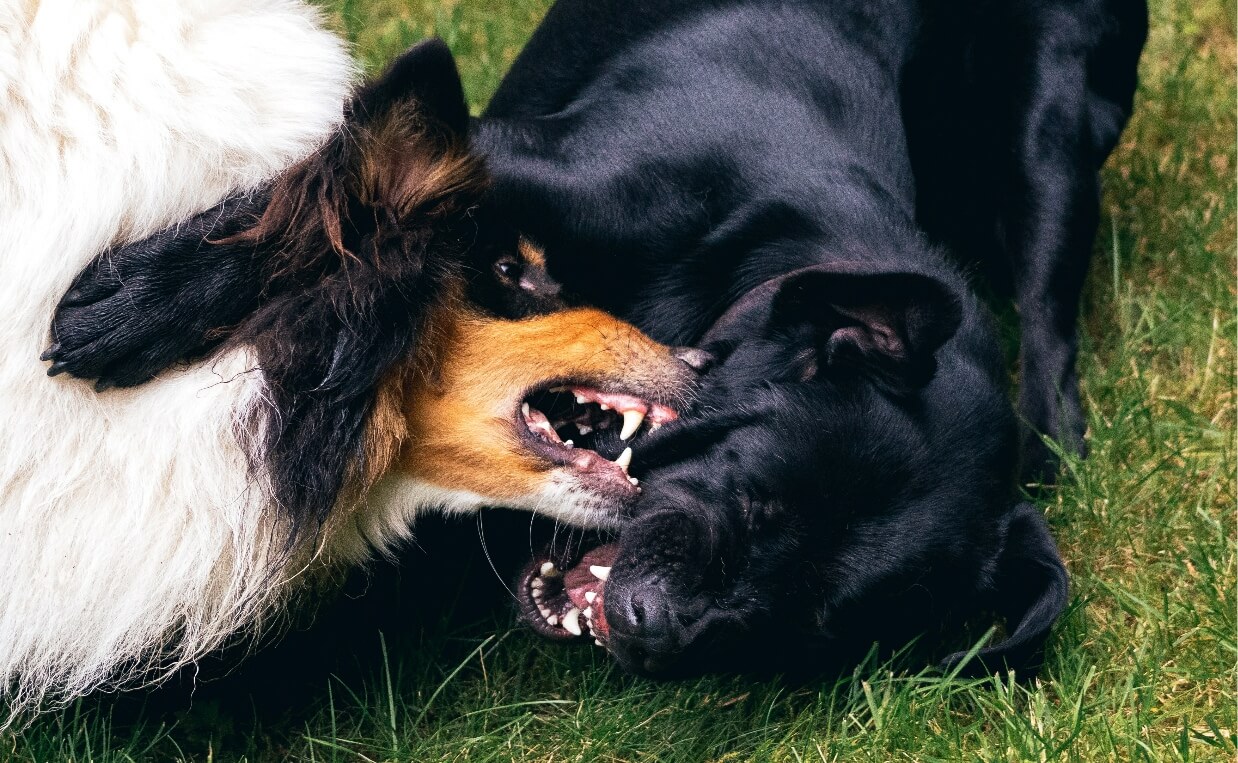
-
Fear aggression
Your dog is fearful and tries to retreat but will attack if cornered.
-
Defensive aggression
Similar to fear aggression, your dog will react rather than trying to retreat first. Most dogs who are defensive will give subtle indications they want to be left alone before escalating, such as turning their head away.
-
Social aggression
Your dog reacts aggressively toward other dogs in a social situation. Dogs who are not socialized with other dogs may exhibit this type of aggression.
-
Frustration-elicited aggression
Your dog behaves aggressively when it’s restricted on a leash or in a fenced yard. When the dog becomes stimulated and can not act on the stimulation, it may act out.
-
Redirected aggression
The dog might become aggressive toward a person who is attempting to break up a dog fight. This type of aggression may occur when a dog can’t reach the target of his or her hostility, such as a neighboring dog on the other side of the fence.
-
Pain-elicited aggression
The dog shows aggression when he or she is in pain or injured.
-
Sex-related aggression
The male dogs or two female dogs become aggressive when vying for the attention of a mate. This applies to intact animals and can be avoided by spaying and neutering.
-
Predatory aggression
Predatory aggression is when a dog exhibits predatory behavior, such as chasing wildlife. This instinct can be come dangerous when a child is playing with the dog. It may start out as an innocent game, but dogs with predatory aggression may quickly turn on and possibly bite the child.
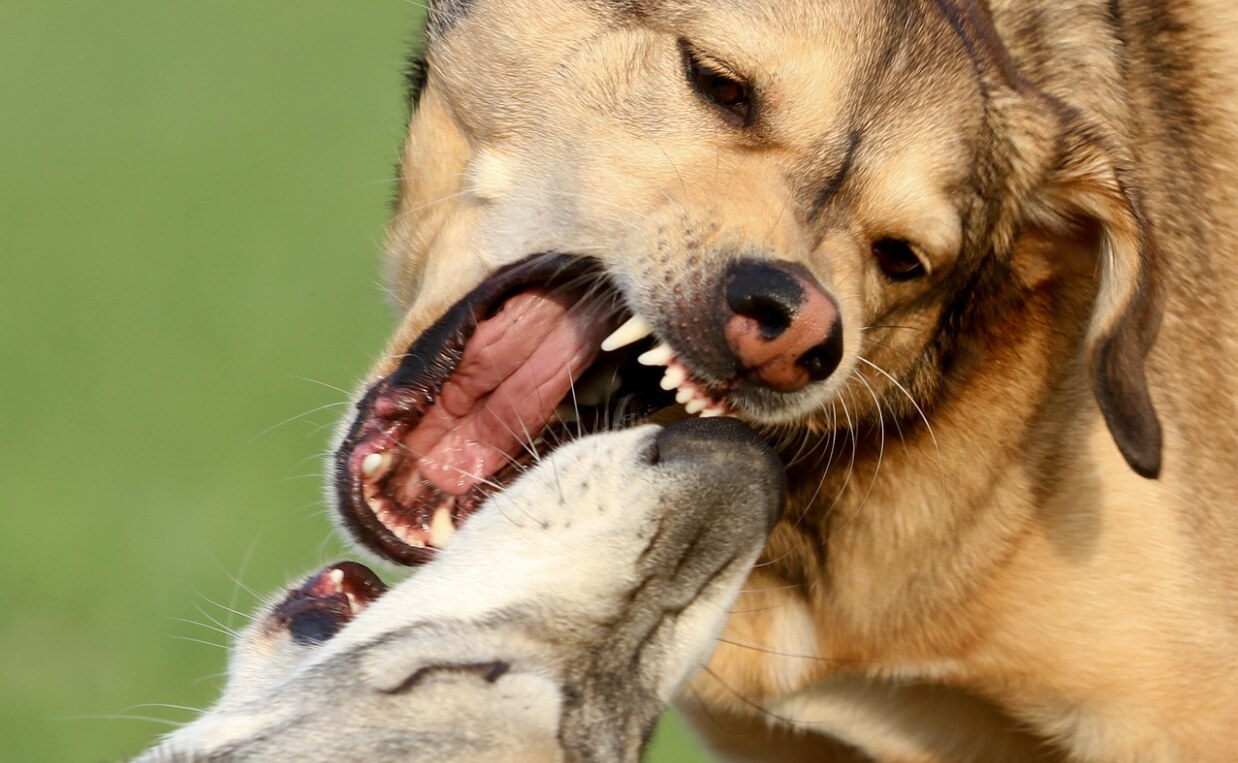
Why are Some Dogs More Aggressive?
Some dogs demonstrate more aggressive behaviors than others. There is a lot of debate about why this is the case, and a research study shows hormones may be to blame.
Researchers found two hormones, oxytocin and vasopressin, influence the aggressive and non-aggressive behaviors in dogs.
Oxytocin and vasopressin, also found in humans, counterbalance one another. Also known as the “love” hormone, oxytocin levels rise when humans connect lovingly with each other.
Vasopressin, on the other hand, is like a dark but necessary twin. It’s the hormone often linked with anger and aggression. Together, these hormones should ideally regulate each other.
In the study, researchers compared both the hormone levels in dogs with a history of aggression and ones who did not. What they found is the blood of the dogs who were more aggressive toward other dogs had higher levels of vasopressin. And service dogs had higher levels of oxytocin than pet dogs. This makes sense because service dogs are bred and trained for their calm and easy-going temperament.
But hormones are not the end of the story. Modulating these hormones does not necessarily mean your dog’s aggressive behavior will be resolved. Behavior involves a complex interaction of genetics, physiological responses, and learned experiences.
The first step in preventing aggression in your canine family member is to identify what triggers his or her aggression. Once you recognize the triggers, you should avoid putting your dog in those situations. This can help avoid aggressive behaviors developing in your dog.
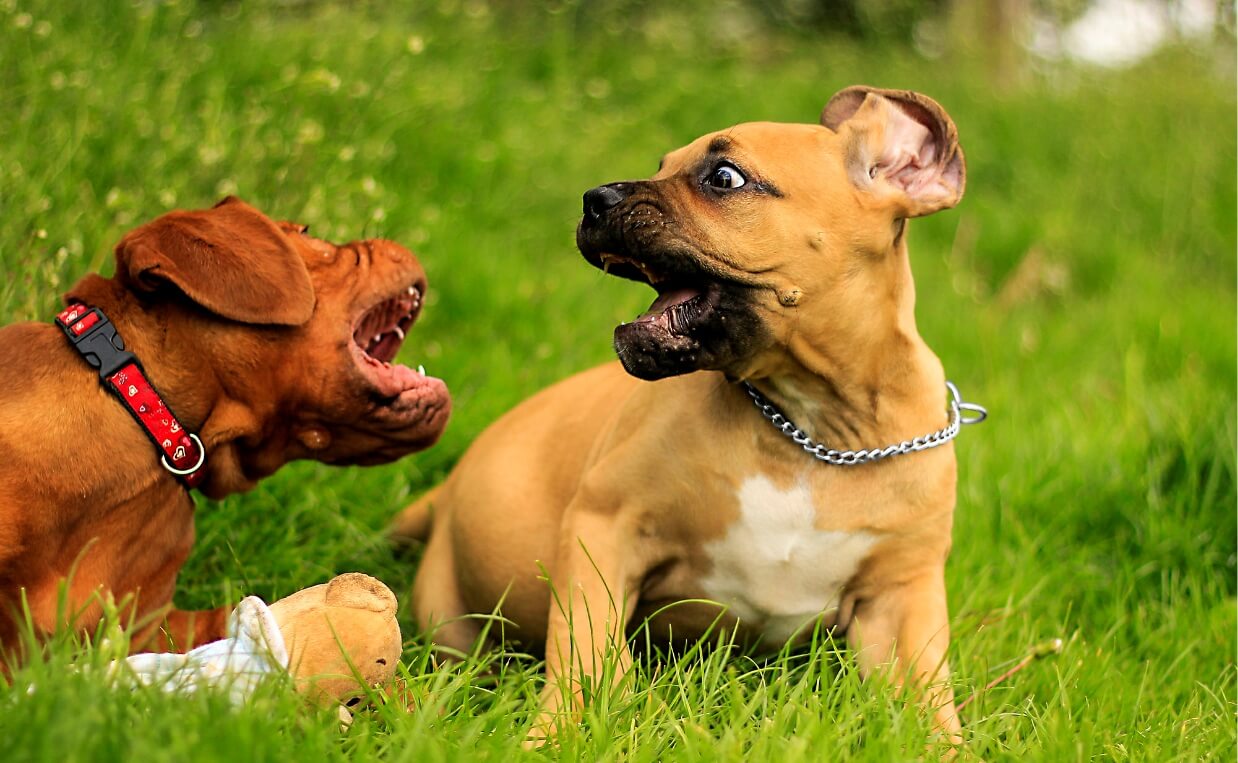
How to Deal with Your Dog’s Aggression
Once you determine the cause of your dog’s aggressive behavior, you can begin addressing the behavior. Here are 4 tips you can implement to help stop your dog’s aggression toward other dogs.
-
Socialize your dog
It’s essential to find a safe place where your dog can learn to socialize with other dogs. If your dog can pass the Canine Campus admissions test, consider bringing your dog to daycare. Our daycare program is a safe, supervised place for dogs to learn proper interaction with other dogs.
-
Work on barking and growling
Barking and growling are both forms of aggression. When this happens, try to take your dog away from what makes him bark and growl and then reassure your dog he or she is safe and can calm down.
-
Leash training
Some dogs become more aggressive when on a leash. Working with your dog on leash training can help your dog learn to behave when approaching other dogs.
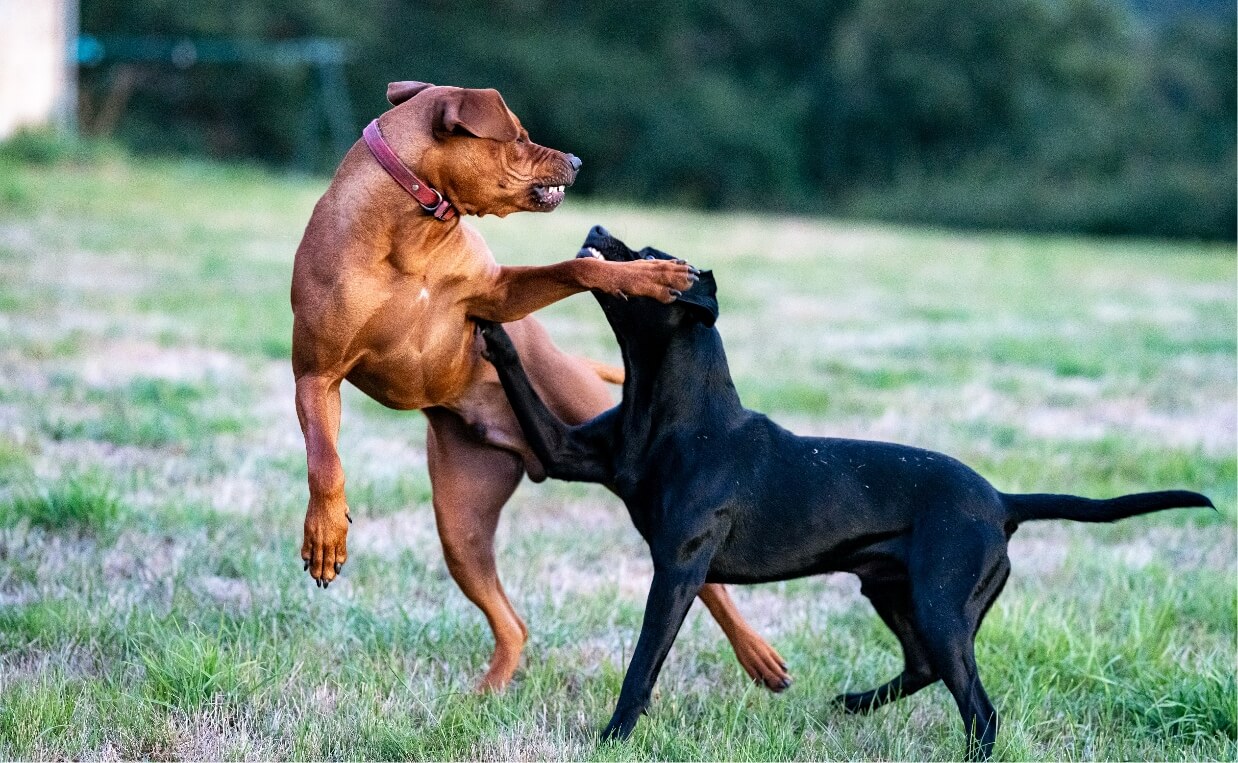
-
Seek out professional help
If you feel your dog is overly reactive or aggressive, and the above strategies aren’t working, you may want to seek out professional help. You can look for a professional dog trainer or behaviorist.
When to See Your Veterinarian
It is a good idea to make an appointment with your veterinarian if your dog is displaying aggression, especially if your dog isn’t normally aggressive but suddenly develops aggressive behaviors. Health problems, including hypothyroidism, painful injuries, and neurological problems are common causes of aggressive behaviors in dogs. Treatment or medication for the underlying condition can make big improvements in your dog’s behavior.
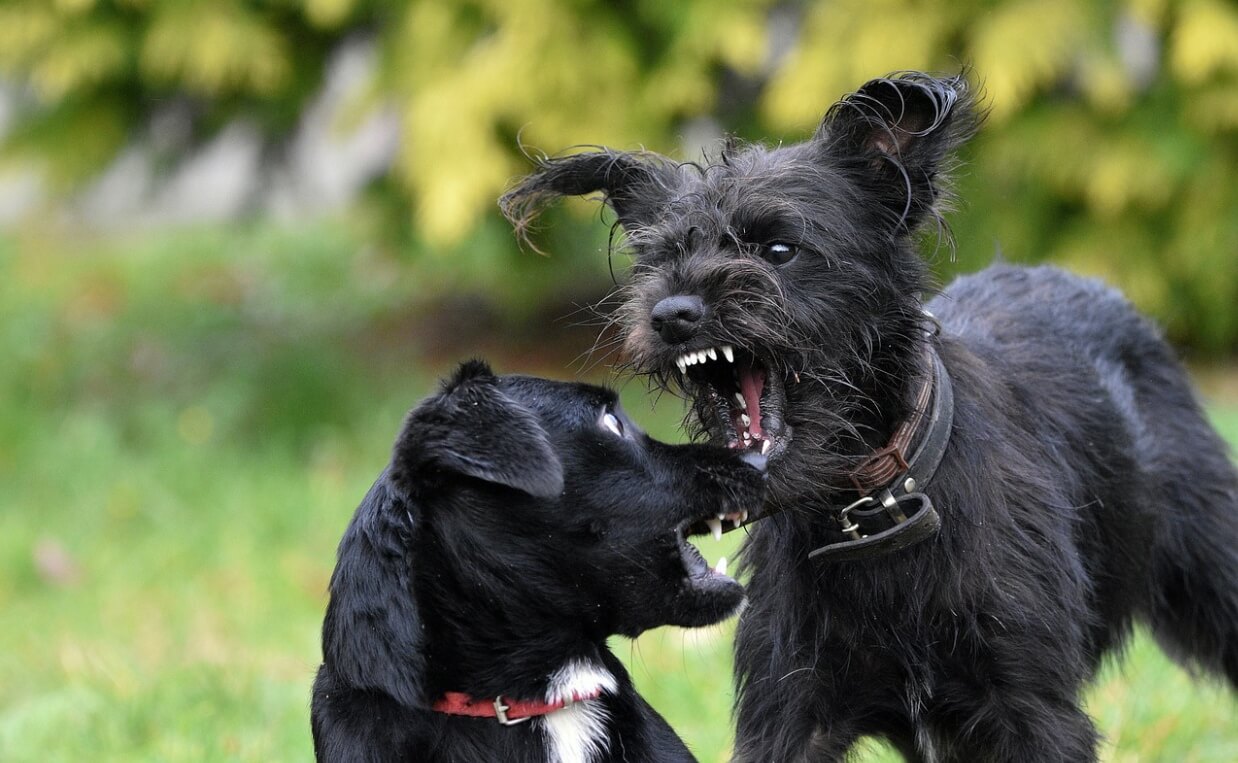
Final Thoughts
Aggression in dogs, much like humans, is a complex issue. There is no overnight solution or an easy fix to turn an aggressive dog into a well-behaved pet. However, with the right approach and a great deal of patience, you can learn how to stop dog aggression in its tracks.
Have you dealt with an aggressive dog? How were you able to resolve the behavior? Please share your experience in the comments below…

 National Pet Poison Awareness Week – March 18 – 24, 2018
National Pet Poison Awareness Week – March 18 – 24, 2018 10 Ways to Keep Your Dog Safe During the Fourth of July
10 Ways to Keep Your Dog Safe During the Fourth of July 8 Tips for Choosing Safe Chews for Your Dog
8 Tips for Choosing Safe Chews for Your Dog 8 Reasons You Should Crate Train Your Dog
8 Reasons You Should Crate Train Your Dog 35 Best Dog-Friendly Hiking Trails in Colorado Springs
35 Best Dog-Friendly Hiking Trails in Colorado Springs






Leave a Reply